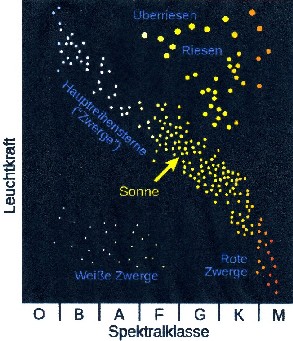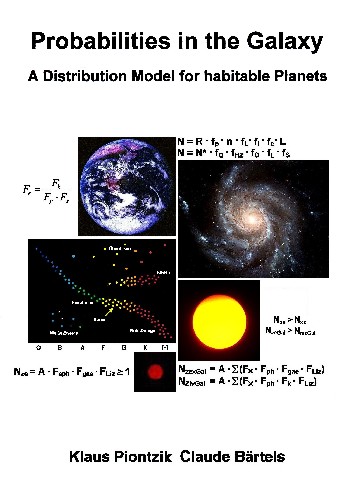 |
In previous
observations, star systems with a sun-like
central star were examined. Assuming that other
star systems, i.e. not solar-like systems, also
have frequencies for technological civilizations,
then the Drake-Seager equation 10.3.2 can be
derived: |
| |
|
| 12.1.1 Equation |
NX
= A · FX
· Fph ·
Fk
· FLiz |
Equation 12.1.1 then applies to the star quantities
formed by a solar type or spectral class[1],
respectively.
 |
The suns of
our galaxy are represented in the so-called
Hertzsprung-Russel diagram[2], arranged according
to colour and luminosity. A total of 13
spectral types exist.
The spectral types O, B, A, F, K,
i.e. the blue, the blue-white, white, the
white-yellow and the orange spectral colors make
up about 1% of the total stars.
In addition, there are the brown dwarfs and the
red giants, i.e. the spectral classes L,
T, Y, R, N, S, which also make up 1%
of the total stars.
Two classes have become known so far. This is the
set of sun-like G stars, with a
yellow spectral color and the probability Fs
= 0.28 = 7:25.
As well as the number of red dwarfs, i.e. M
stars with a red-orange spectral color and a
probability FRZ
= 0.7 = 7:10. Thus, the two spectral
classes make up 98 % of the
total stars in the galaxy. |
|
